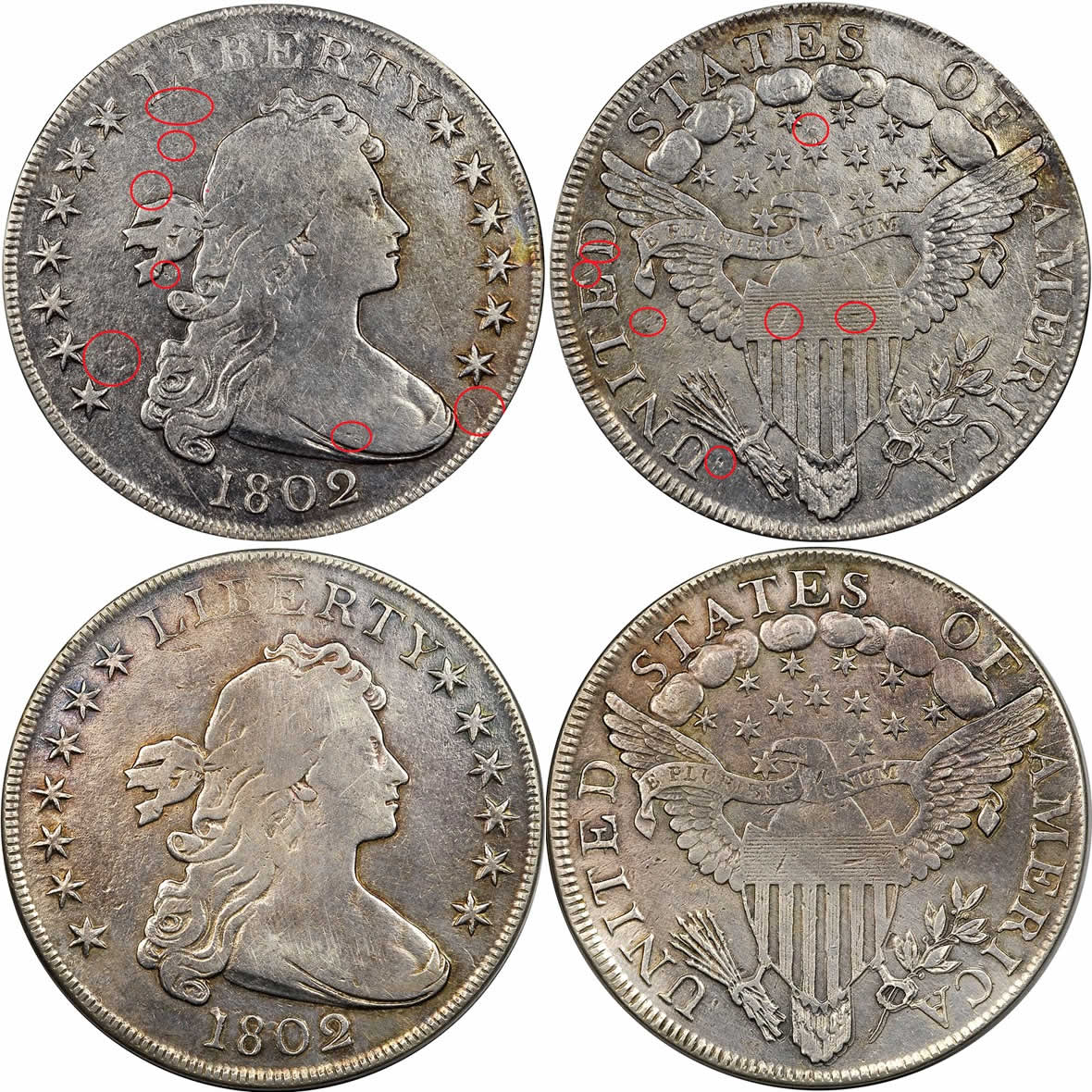NGC -
This fake was struck using a die created from a real coin.Like other early dollars struck by the U.S. Mint, 1802 Draped Bust examples are worth well over $1,000 in all but the most heavily circulated conditions. These silver coins boast an enthusiastic following among collectors, and this demand gives counterfeiters a strong incentive to produce fakes.
Graders at Numismatic Guaranty Corporation (NGC) recently encountered a counterfeit 1802 dollar struck from dies that were created from impressions of a genuine (or "host") coin. The host example was not particularly high-grade, as it had multiple contact marks that were transferred to the die. Every coin that was struck with these dies feature the same repeating depressions.
Several years ago, another 1802 example with these same marks was submitted to NGC and identified as a counterfeit. (To assist in the authentication process, NGC graders can access an extensive image library of counterfeits, which is how the previously submitted phony dollar was rediscovered.)
Statistically speaking, two coins simply cannot acquire this many contacts marks in the exact same places during normal circulation. In addition, an odd doubling appears at the bottom right of each coin's reverse, a trait that is likely unique to this particular counterfeit die.
 The counterfeit on the top features the same depressions as a spurious issue that was submitted to NGC years ago (bottom).
The counterfeit on the top features the same depressions as a spurious issue that was submitted to NGC years ago (bottom).Could the coin recently submitted for grading be the host specimen? A closer look at the depressions casts doubt on this theory; they are shallow and have the same luster as the rest of the piece, indicating they were struck into the coin. In contrast, genuine contact marks (which occur after a coin is struck) usually have a different surface quality compared to the surrounding area.
Finally, the counterfeit's true nature is revealed by a close examination of its "third side"—the edge. In this case, the fake's lettering is far too sharp to have been produced at the nascent U.S. Mint, which was just over a decade old when the 1802 dollars were struck.
 The edge lettering on the counterfeit (top) is much clearer than that of a genuine example.
The edge lettering on the counterfeit (top) is much clearer than that of a genuine example.Fakes are one of the greatest threats to the coin-collecting hobby. Counterfeiters utilize a wide range of deceptive techniques, such as adding the artificial toning seen on both of these coins that makes them appear much older. Fortunately, NGC backs its determinations of authenticity and grade with the NGC Guarantee.
Read More: Counterfeit Detection Series Check out certified 1802 Draped Bust Dollars on ebay
Check out certified 1802 Draped Bust Dollars on ebay.






















